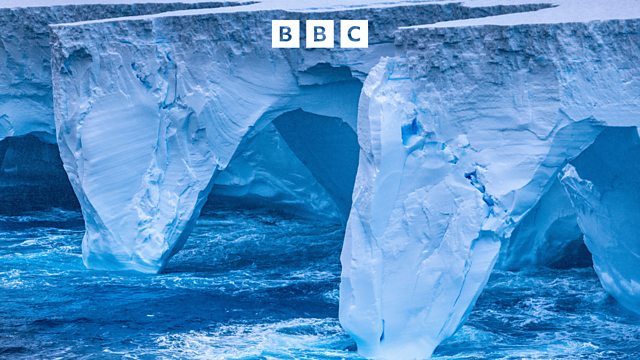What can the world’s biggest iceberg tell us?
Is the world’s biggest iceberg an indicator of climate change?
The current record holder for the world’s biggest iceberg is the A23a. Back in 1986 this colossus broke away from an Antarctic ice sheet. This process of breaking off or ‘calving’ as it is known is a natural part of the life cycle of an ice sheet. But A23a then became lodged in the Weddell Sea for more than thirty years, until four years ago a gradual melting allowed the berg to refloat.
Since then it’s been steadily on the move, heading in the same direction as Antarctic icebergs before it, towards the warm waters of the Southern Ocean, where it will eventually shrink from melting.
As it travels, the iceberg has been playing an important role on the ecological environment around it, both in positive and negative ways.
So, on this week on The Inquiry, we’re asking ‘What can the world’s biggest iceberg tell us?’
Contributors:
Dr. Catherine Walker, Glaciologist, Woods Hole Oceanographic Institution, Massachusetts, USA
Dr. Oliver Marsh, Glaciologist, British Antarctic Survey, Cambridge, UK
Jemma Wadham, Professor of Glaciology, UiT The Arctic University of Norway
Christopher Shuman, Research Associate Professor, NASA Goddard Space Flight Centre, Maryland, USA
Presenter: William Crawley
Producer: Jill Collins
Researcher: Katie Morgan
Editor: Tara McDermott
Production Co-ordinator: Ellie Dover
Image Credit: A23a in Antarctica, Jan 2024. Rob Suisted/Reuters/via ���˿��� Images
Last on
More episodes
Featured
-
.
Broadcasts
- Thu 30 May 2024 07:06GMT���˿��� World Service
- Thu 30 May 2024 14:06GMT���˿��� World Service
- Thu 30 May 2024 17:06GMT���˿��� World Service East and Southern Africa & West and Central Africa only
- Thu 30 May 2024 21:06GMT���˿��� World Service except East and Southern Africa & West and Central Africa
- Sat 1 Jun 2024 18:06GMT���˿��� World Service except East and Southern Africa & West and Central Africa
- Sun 2 Jun 2024 00:06GMT���˿��� World Service
- Sun 2 Jun 2024 11:06GMT���˿��� World Service East and Southern Africa & West and Central Africa only
Podcast
-
![]()
The Inquiry
Getting beyond the headlines to explore the forces and ideas shaping the world


